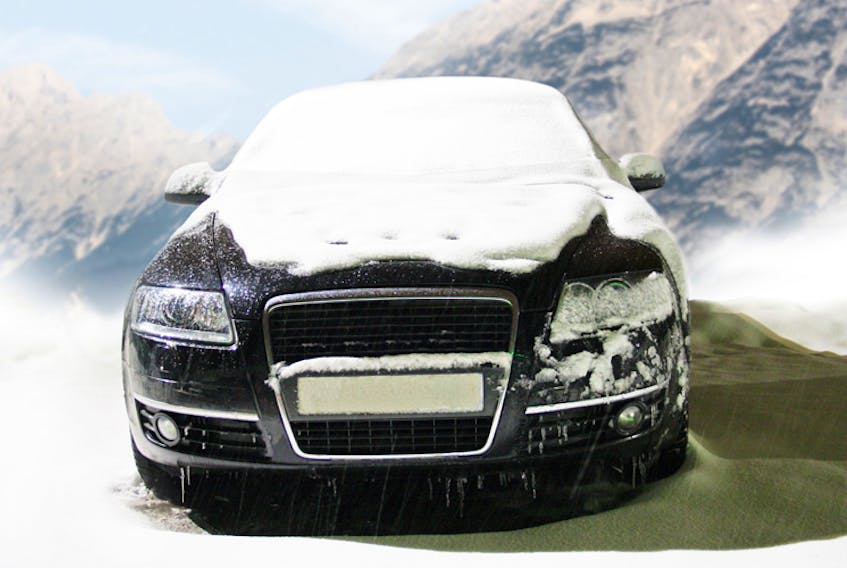Q: Do winter fronts/radiator covers really help warm the car any faster in cold weather?
If they do help, then does a piece of cardboard in front of the radiator work as well as covering the grill, or is that causing a risk of overheating?
I know that some cut a hole in the centre of the cardboard but does that cause problems with uneven heating in the radiator core?
Sam
A: In extreme cold weather, winter fronts do help the vehicle warm up faster. Diesel engines and modern fuel injected gas engines are so fuel efficient that very little heat is produced in the engine at idle.
Usually the engine has to be under load before enough fuel is injected to produce heat.
Aluminum cylinder heads and engine blocks on many of today’s vehicles dissipate heat quickly, making it even harder to heat the passenger compartment.
Placing cardboard in front of the radiator works, but it places more load on mechanical cooling fan bearings and could also make the engine overheat quicker when outside temperatures rise.
Some people cut a hole in the cardboard, but this can place an uneven stress on the fan unless the hole is perfectly centred with the fan blades.
A better method to reduce airflow in the engine compartment is to cover the grille and the opening below the bumper with a winter front. This still allows some air through the radiator but blocks most of the cold air.
Q: I have a 2013 Hyundai Elantra with 105,000 km. The engine was replaced under warranty at 72,000 (cause unspecified).
It was making a loud noise and stalling intermittently and was replaced.
Over the last month the vehicle has been losing power at 3,000 rpm and greater on the highway after prolonged periods of driving.
First instance after driving 3.5 hours; second instance the same. Between the first and second instances, the car was driven once for 3.5 hours with no occurrence.
This happens when driving at highway speed and approaching an incline which causes the vehicle to rev to over 3,000 rpm.
The only way to make it up the incline is to ease off the gas so the rpm reduces below 3,000 rpm, doing this multiple times until the incline levels out and the rpm drops to about 2,000.
It only loses power on an incline, and it doesn't have to be a big one.
After the first incident all spark plugs were replaced and a fuel service performed, as the dealer determined these were the most likely causes. No luck. The dealer has not been able to identify a cause. Do you have any ideas?
June
A: The most likely causes would be a faulty throttle position sensor or throttle pedal sensor. The sensors reports the position of the throttle plates and pedal back to the engine computer and the variable resistor inside can develop a dirty or corroded spot that sends a faulty signal.
This usually happens at just one small position in the sensor but it could affect more. It may set a code if the problem is bad enough but not always.
Both these sensors can be tested using a lab scope to monitor the signal for drop out as they are slowly moved through their range of motion, so it should be possible to test them to identify the problem area.
Another possible fault could be in the park/neutral switch. If the engine computer sees the transmission in park or neutral, it will limit engine rpm so the engine isn’t damaged.
A faulty park/neutral switch or a short in the wiring from the switch to the computer could cause your vehicle’s symptoms and wouldn’t set any code.
Finally, it is possible a faulty manifold absolute pressure sensor could cause this symptom. I have only seen it twice in my career but in both cases the faulty sensor would send a signal only on an incline that caused the engine computer to lose power.
Strangely enough, both these vehicles could back up a hill but didn’t have enough power to drive up it forward. Changing the sensor fixed them both.
This is a difficult problem to diagnose, but with a little time it should be possible to find the fault.









